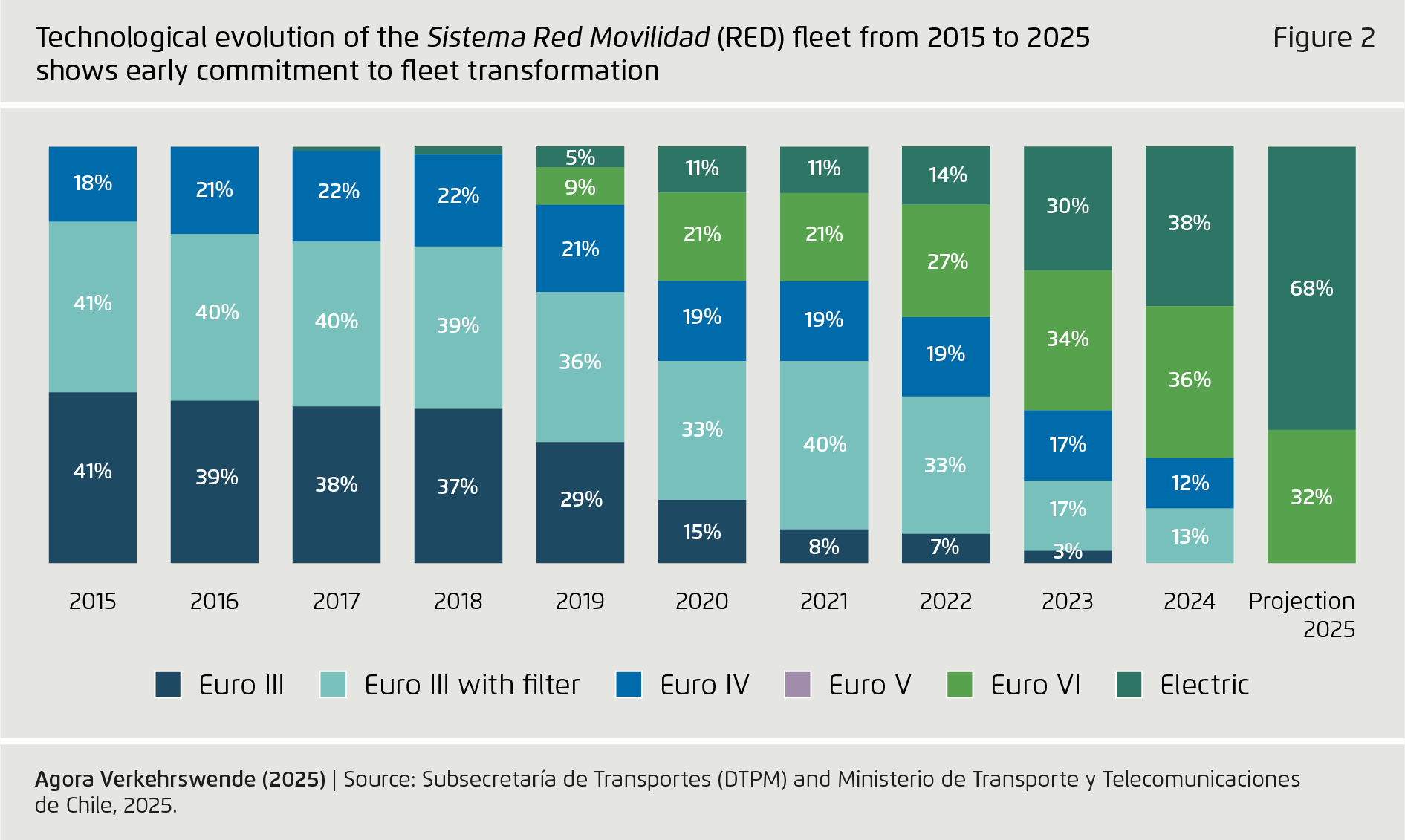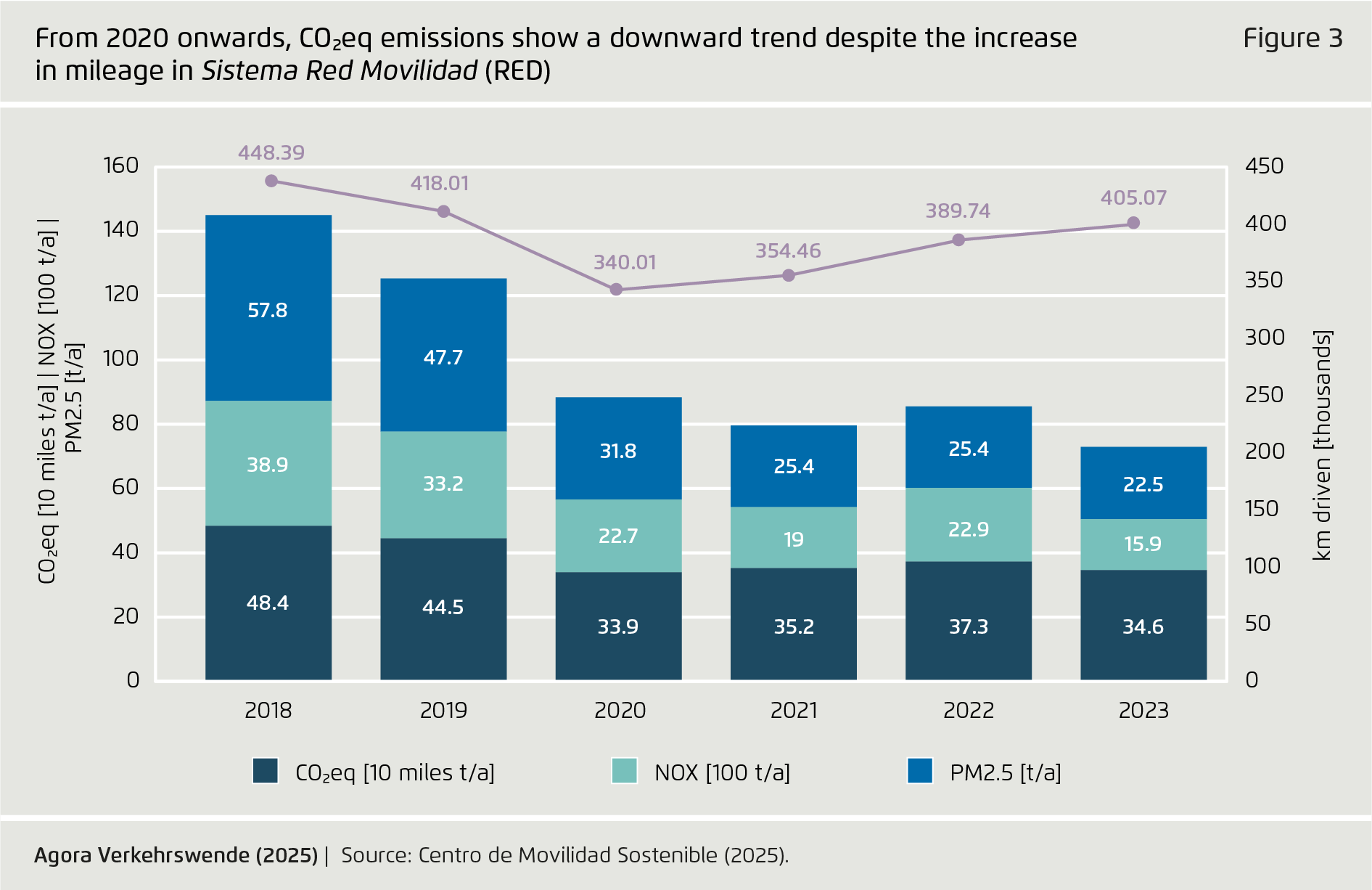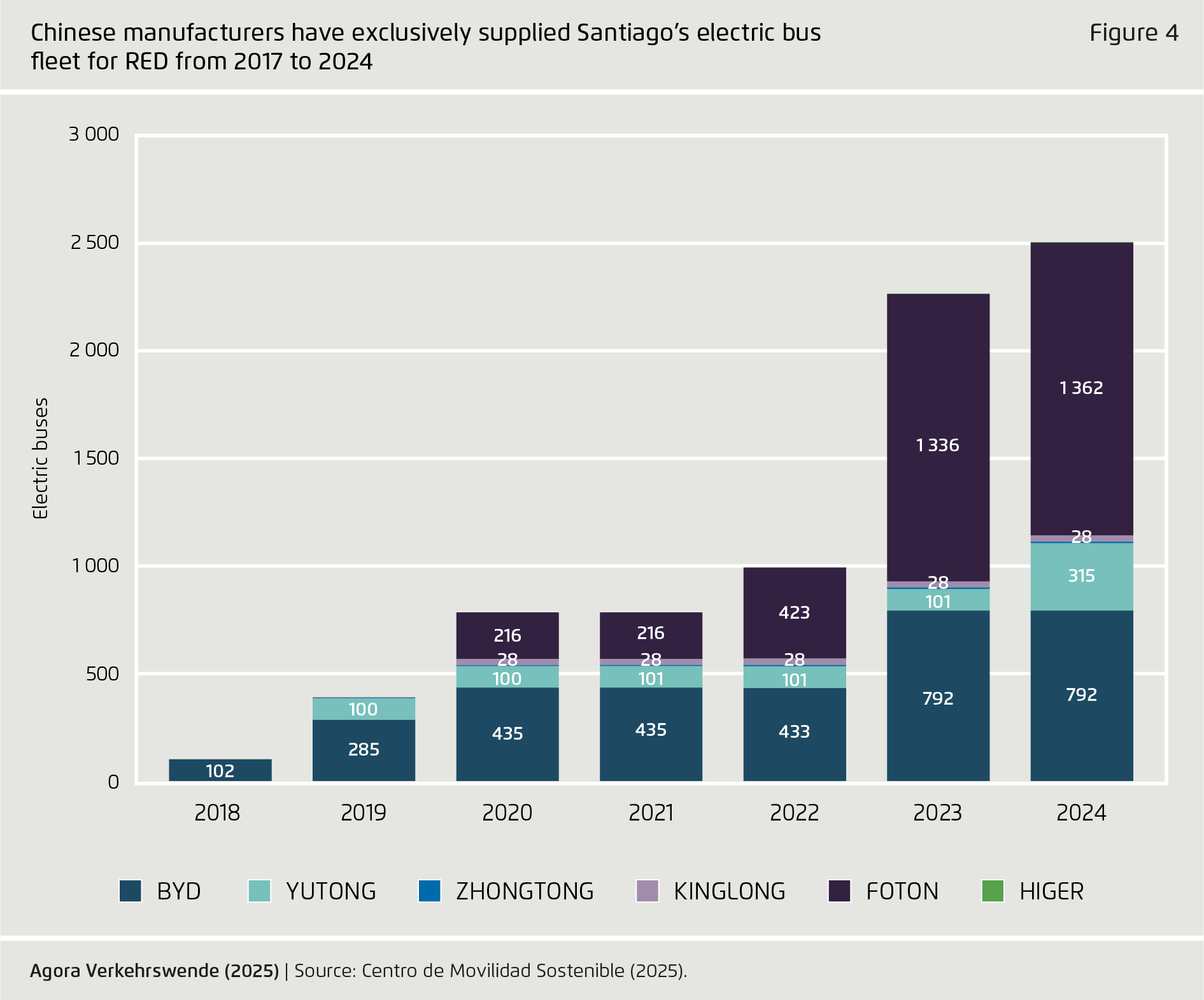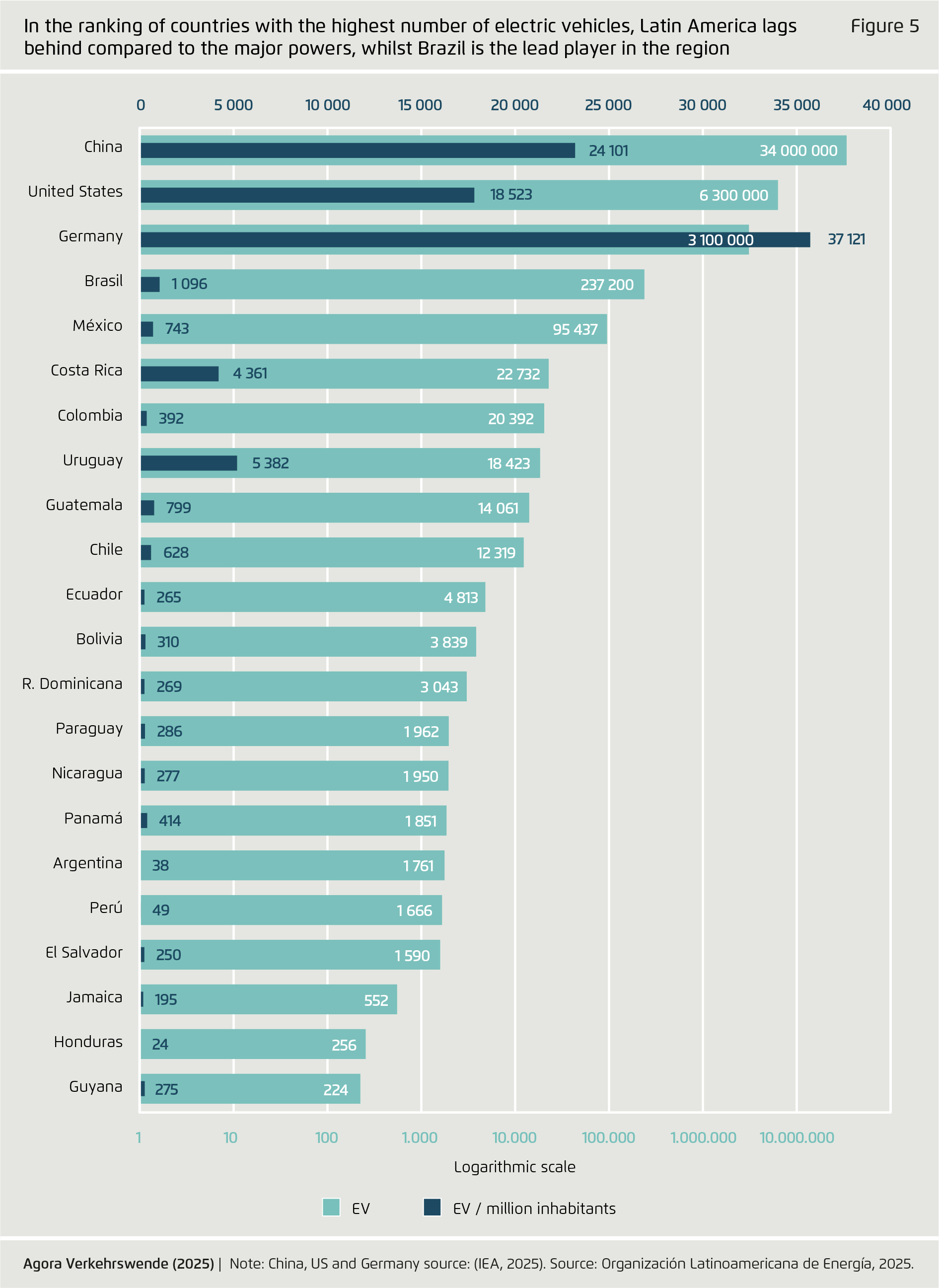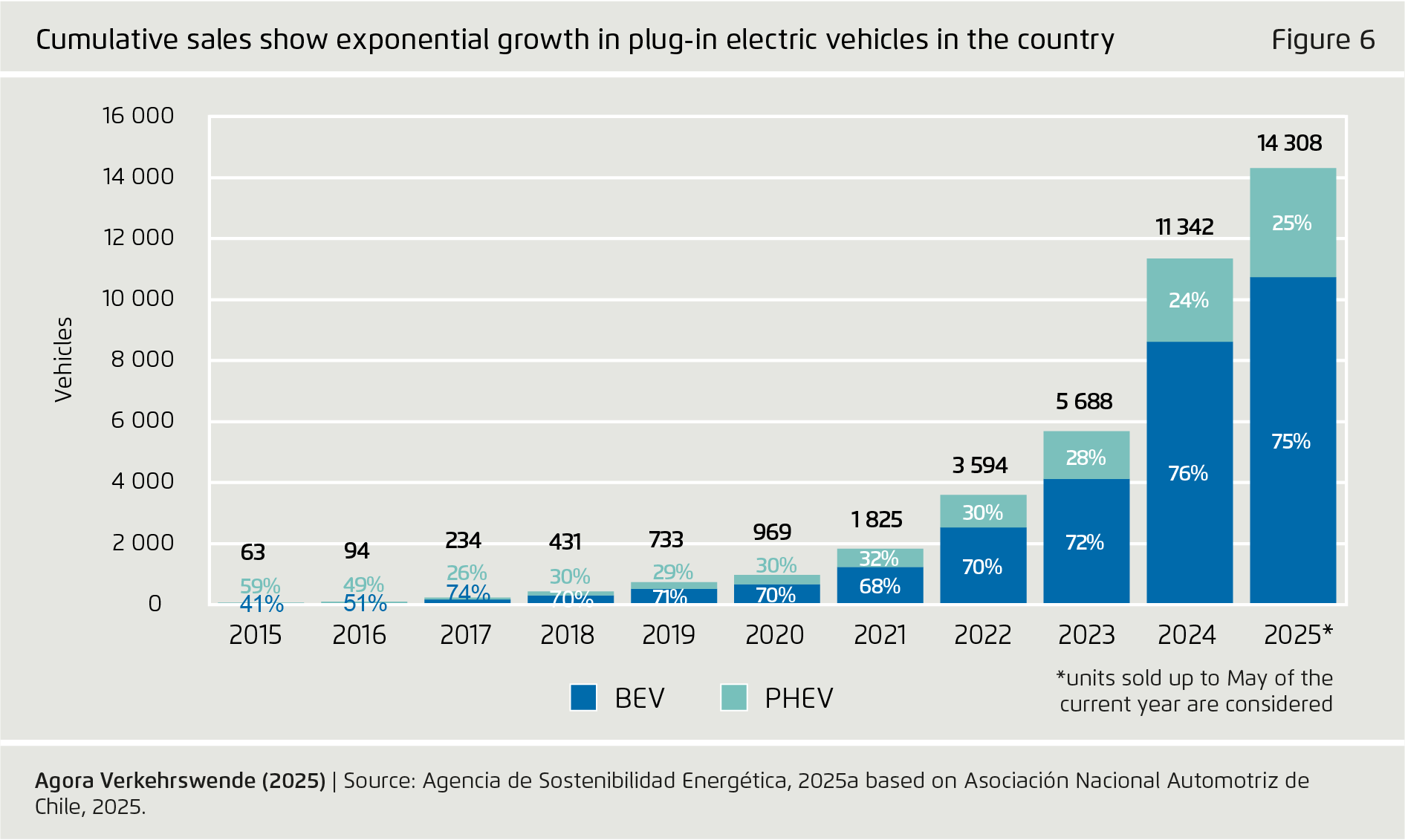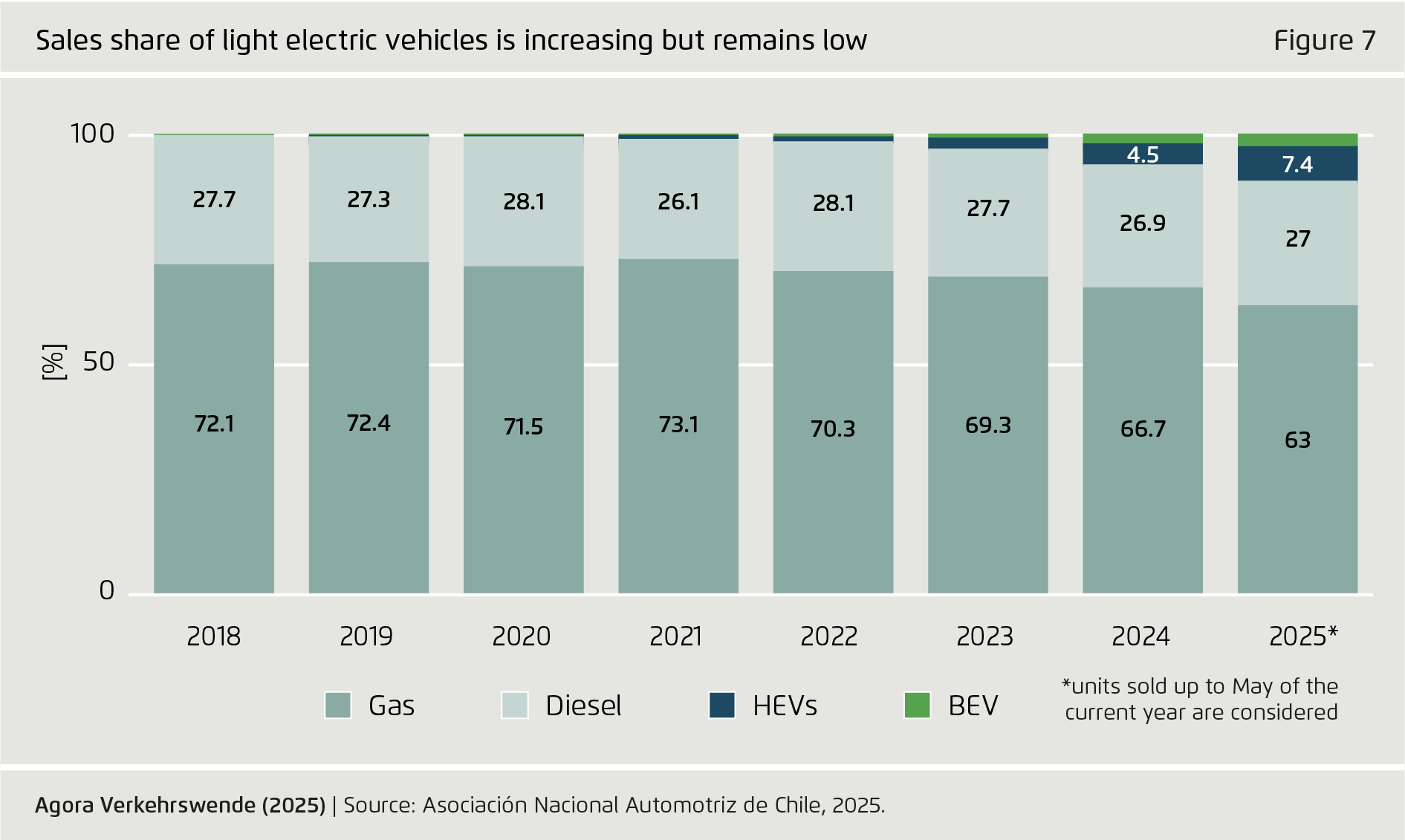-
Long-term climate commitment and policy consistency across political cycles are fundamental for transport decarbonisation.
Chile’s success stems from a decade of sequenced interventions, including early financial mechanisms like Law No. 20.378 in 2009, pilot deployments between 2016 and 2020, and later-stage mandates such as the 100 percent Zero Emission Vehicle (ZEV) procurement target by 2035. This multi-administration approach ensured sustained private-sector confidence and facilitated the rapid adoption of electric technologies within Santiago’s public transport system, demonstrating that a long-term vision is key to accelerating the transition to electromobility.
-
Innovative policy and financing tools are essential in emerging markets for attracting investment and creating certainty.
Santiago’s public transport business model that separates asset ownership from operations, along with adjustable subsidies (Law No. 20.378), significantly reduced investor uncertainty. Furthermore, energy tariff reforms, which cut operator costs by 18 to 22 percent, and the implementation of fuel economy standards, which impose quotas and penalties, are critical for attracting the necessary capital in volatile economies. That demonstrates how tailored strategies can de-risk investments and accelerate market transformation.
-
Scaling charging infrastructure and fleet renewals with electric vehicles to secondary cities are critical for full transport decarbonisation.
While the capital accounts for 95 percent of Chile’s operational electric buses and 28 of its 30 charging terminals, 86 percent of EVs and 75 percent of public charging infrastructure, regional cities face significant infrastructure gaps. These disparities threaten equitable progress and underscore the urgent need for a more distributed development strategy to ensure that the benefits of electromobility extend nationwide.
-
Electrification must now expand beyond buses to meet full decarbonisation targets.
While Santiago’s electric bus fleet leads globally, the slow adoption of electric freight and private vehicles, with a mere 2.5 percent penetration, risks stalling sector-wide progress. Although some policies, like the fuel economy standards, can help reduce the high upfront EV costs (currently just three EV models are below 20 000 US dollars), there are some persistent gaps to spur demand. Sparse charging infrastructure, with only one public station per 18 000 residents, remains a critical barrier. These challenges are particularly acute for long-haul trucks and middle-income drivers, who lack access to the fleet-scale subsidies that have propelled bus adoption, highlighting the need for diversified strategies to accelerate broader market penetration.
-
High-visibility electric transport projects create momentum for other countries to transition.
Santiago’s focus on buses, achieving 40 percent fleet electrification (3 059 vehicles) and 52.8 percent PM2.5 reductions by 2024, built public support and catalysed cross-sector initiatives. This success has inspired similar transport transformations across Latin America, showcasing the ripple effect of targeted public investments.
Chile’s path to electromobility
An assessment of policies, progress and prospects
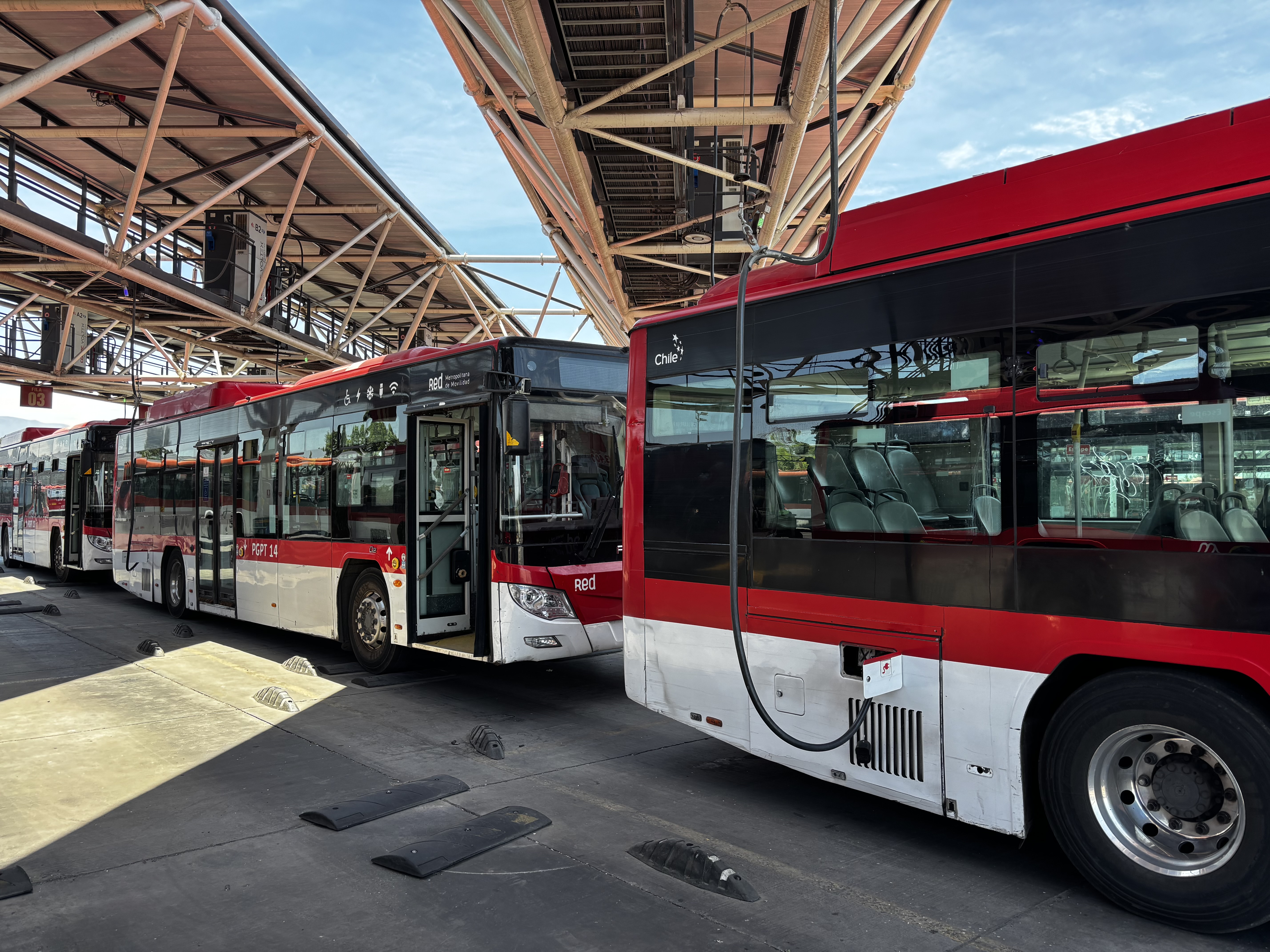
Preface
In this publication we analyse the policy pathway that has enabled the high level of electric bus penetration in Chile. Our assessment identifies the key variables behind this success, examines persistent challenges and outlines the prospective steps needed to achieve comprehensive decarbonisation targets. The resulting insights can serve as valuable inspiration for other countries facing similar challenges.
While this report focuses specifically on transport electrification, we recognise that a comprehensive decarbonisation strategy requires complementary measures. Key elements such as public transport coverage expansion, modal shift incentives (for example, cycling infrastructure or pedestrianisation) and urban planning reforms were beyond the scope of this study, though they remain critical for achieving Chile’s broader emission reduction targets.
This report underscores that climate change remains a paramount political priority in an era where the lifespan of internal combustion vehicles is undeniably drawing to a close. We firmly believe that decarbonisation is a global phenomenon, and internal combustion engine vehicles will be progressively disappearing from automotive markets worldwide.
Key findings
Bibliographical data
Downloads
-
Analysis
pdf 2 MB
Chile’s path to electromobility
An assessment of policies, progress and prospects
All figures in this publication
Santiago boasts the third-largest fleet of electric buses globally and the first one in Latin America
Figure 1 from Chile’s path to electromobility on page 7
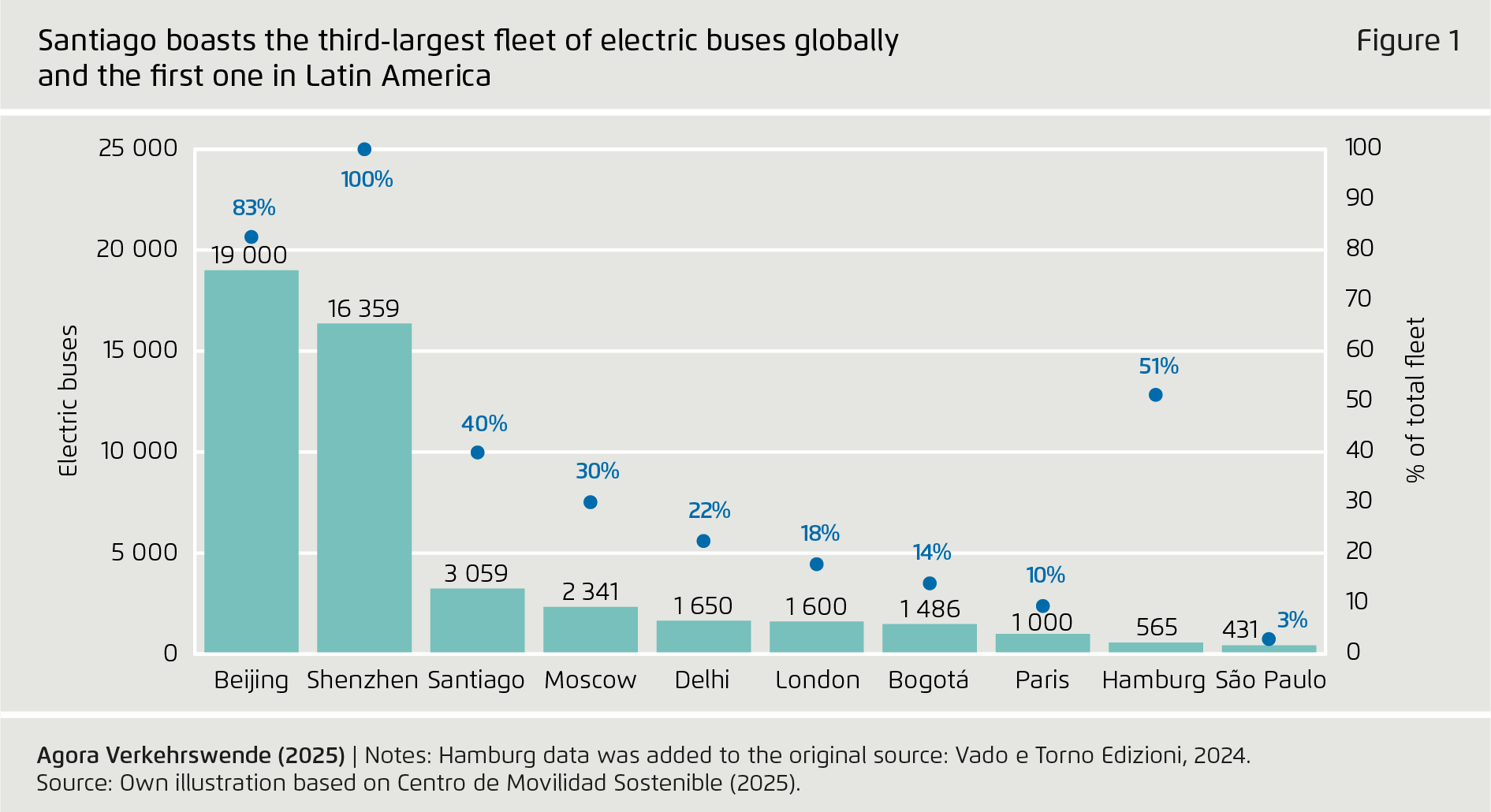
Technological evolution of the Sistema Red Movilidad (RED) fleet from 2015 to 2025 shows early commitment to fleet transformation
Figure 2 from Chile’s path to electromobility on page 8
